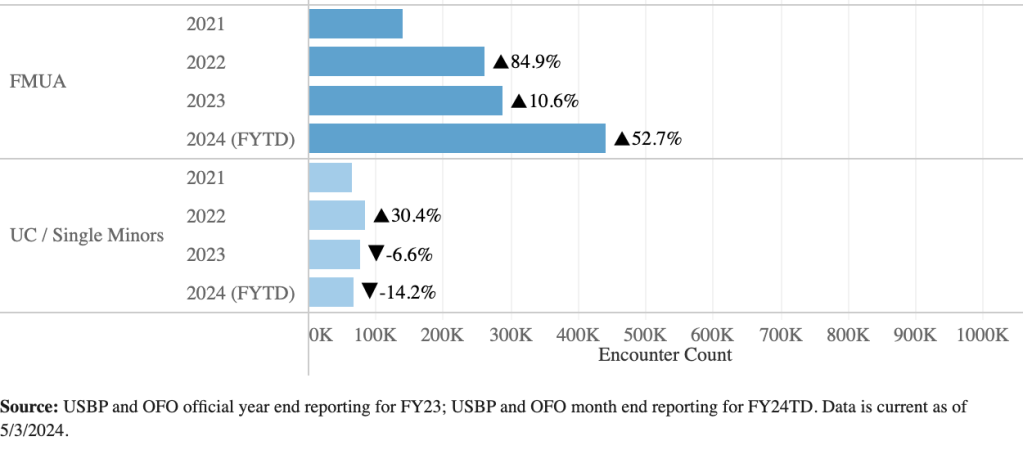The huge spike in inadmissible children entering the U.S. unaccompanied (UC) or as part of a family unit (FMUA) is overwhelming school systems in receiving communities.

Educators and teachers tell The Wall Street Journal that students are arriving with “huge trauma issues” after having “lived in two, three or four countries” before entering the United States. (Note: most inadmissible aliens released into the U.S. are economic migrants passing through multiple safe third countries before reaching their destination of choice.)
Jon Kamp and Alicia Caldwell report that the “influx of teenagers is particularly challenging, though, because they won’t get the many years of English instruction typically needed to be successful in school,” according to teacher Thais Payne, whose Massachusetts school district has more than doubled it’s English-as-a-second-language teachers over five years.
Denver’s metro school district has spent between $98 million and $222 million to accommodate mass immigration. Ryan Mills reports that the “range in costs is due to the difficulties researchers had identifying exactly how many new foreign students are tied to the migrant crisis.”
In all, Mills reports, the “more than 42,000 migrants who have arrived in Denver over the last year and a half have cost the region as much as $340 million.”
Those costs include roughly 16,000 uncompensated visits to emergency rooms at an average cost of $3,000 per person.
The Biden administration releases roughly 1,000,000 inadmissible migrants into the U.S. annually.
Take Action
Your voice counts! Let your Member of Congress know where you stand on immigration issues through the Action Board. Not a NumbersUSA member? Sign up here to get started.
Donate Today!
NumbersUSA is a non-profit, non-partisan organization that relies on your donations to works toward sensible immigration policies. NumbersUSA Education & Research Foundation is recognized by America's Best Charities as one of the top 3% of well-run charities.
Immigration Grade Cards
NumbersUSA provides the only comprehensive immigration grade cards. See how your member of Congress’ rates and find grades going back to the 104th Congress (1995-97).